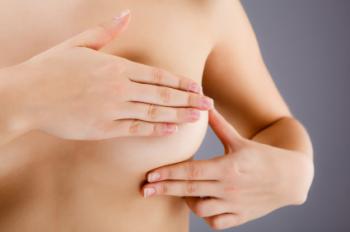 Tamoxifen is a hormone drug that binds to estrogen receptors, blocking its actions so that cells - including cancer cells - needing estrogen to divide, stop growing and die. The drug is taken orally to prevent breast cancer in high-risk women and to treat advanced breast cancer.
But a new study suggests a gel form of the drug, applied directly to
the breast, is just as effective and produces fewer side effects.
Tamoxifen is a hormone drug that binds to estrogen receptors, blocking its actions so that cells - including cancer cells - needing estrogen to divide, stop growing and die. The drug is taken orally to prevent breast cancer in high-risk women and to treat advanced breast cancer.
But a new study suggests a gel form of the drug, applied directly to
the breast, is just as effective and produces fewer side effects.
 Led by Dr. Seema A. Khan, professor of surgery at Northwestern
University Feinberg School of Medicine in Chicago, IL, the researchers
undertook a randomized, double-blind, placebo-controlled phase 2
clinical trial comparing the effects of oral tamoxifen with a breakdown
product of the drug - known as 4-OHT - in gel form that was applied to
the breasts of women with ductal carcinoma in situ (DCIS).
Led by Dr. Seema A. Khan, professor of surgery at Northwestern
University Feinberg School of Medicine in Chicago, IL, the researchers
undertook a randomized, double-blind, placebo-controlled phase 2
clinical trial comparing the effects of oral tamoxifen with a breakdown
product of the drug - known as 4-OHT - in gel form that was applied to
the breasts of women with ductal carcinoma in situ (DCIS).
Applying tamoxifen gel directly to the breast is just as effective as taking the drug orally, say researchers, who add that the gel produces fewer side effects.
"Oral tamoxifen is used by some women at high risk for breast cancer to prevent the development of the disease," says Dr. Seema, "and our data suggest that gel application of tamoxifen could replace this approach, thus encouraging more women to adhere to preventive therapy."
To conduct their study, the team randomly assigned 26 women with DCIS, who were between the ages of 45-86 years old, to either the 4-OHT gel group or the oral tamoxifen group.
At the baseline of the study, all participants gave a blood sample and completed a questionnaire. Then, for 6-10 weeks prior to surgery, patients in the gel group applied 1 ml of the gel - which contained 2 mg of 4-OHT - to their affected breast each morning. Those in the oral tamoxifen group meanwhile took a 20 mg tamoxifen capsule each day.
At the end of the study, all participants provided another blood sample, and they again completed the questionnaire at 15 days, post-study, and again during a post-surgery visit.
Gel reduced hormonal side effects and blood clottingAfter applying the gel for 6-10 weeks, there was a reduction in a marker of cell proliferation in the participants' breast tissue, which was comparable to that of oral tamoxifen taken during the same period of time.
Additionally, the team found that there were equal amounts of 4-OHT present in the breast tissue of participants from both the gel and oral tamoxifen groups.However, the levels of 4-OHT in the blood of patients in the gel group was 5.5-fold lower than those from the oral tamoxifen group, which correlates with a reduction in factors that cause blood clots.
 Explaining their findings further, Dr. Khan says:
Explaining their findings further, Dr. Khan says:
"Tamoxifen has to be broken down by the liver to its active components, which include 4-OHT. In this process, harmful side effects can also arise, such as the activation of proteins that cause blood clots. Because the liver metabolism step is eliminated when the 4-OHT gel is directly applied to breast skin, the harmful effect of increasing the risk for blood clots should also be eliminated."The American Cancer Society note that clots can cause heart attack, stroke or blockage in the lungs.
Though the gel reduced clots, the researchers note that the gel group did not exhibit any significant improvement in vaginal symptoms, gastrointestinal symptoms, hot flashes or sweats, compared with those in the oral group.
"We are making rapid advances in improving the efficacy and safety of drugs, but ultimately no progress is possible without public support," says Khan.
The National Institutes of Health and BHR Pharma LLC helped fund the study.